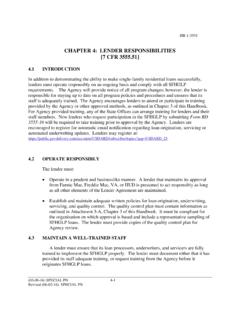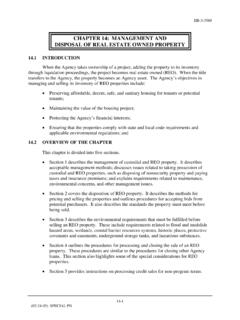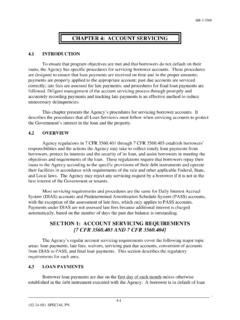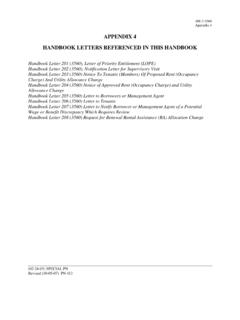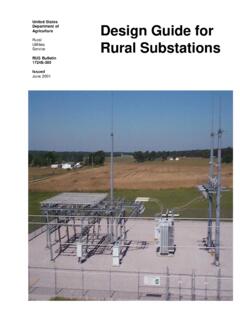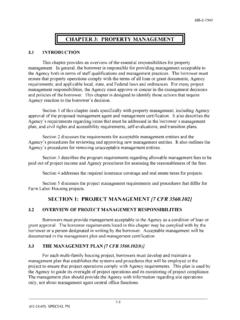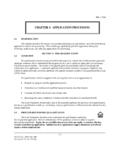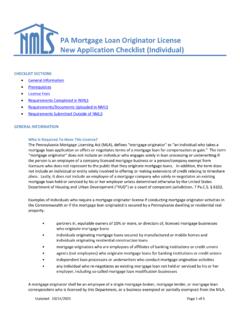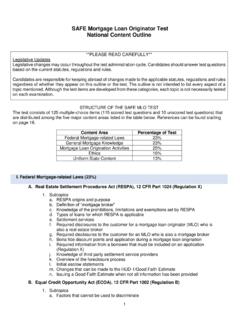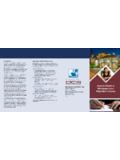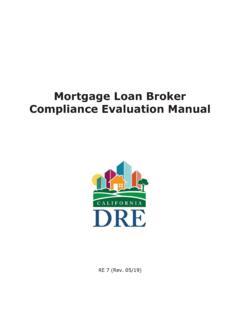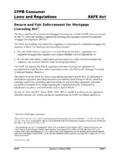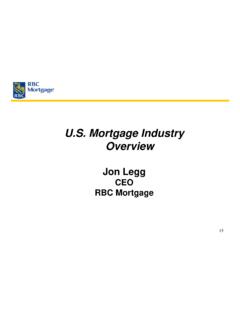Transcription of CHAPTER 4: BORROWER ELIGIBILITY
1 HB-1-3550 OVERVIEW Ensuring that all applicants served are eligible and receive the correct amount of assistance is a significant responsibility of loan Originators and loan Approval Officials. A BORROWER must be income-eligible, demonstrate a credit history that indicates ability and willingness to repay a loan , and meet a variety of other program requirements. This CHAPTER provides guidance for each of these areas. Section 1: Evaluating BORROWER Income provides instructions for calculating and verifying annual, adjusted, and repayment income.
2 Section 2: Evaluating BORROWER Assets discusses Agency requirements for cash contributions to the purchase and methods for computing income from assets. Section 3: Credit History identifies indicators of acceptable and unacceptable credit and provides instructions for reviewing an applicant s credit history. Section 4: Other ELIGIBILITY Requirements addresses a variety of other requirements applicants must meet to be eligible for the program. Section 5: Processing the Certificate of ELIGIBILITY provides policies and procedures for processing Form FD 1944-59, Certificate of ELIGIBILITY .
3 SECTION 1: EVALUATING BORROWER INCOME OVERVIEW [7 CFR (a) and (g), 7 CFR ] loan Originators use income information to: (1) help determine whether an applicant is eligible for a loan ; (2) calculate the applicant s ability to repay a loan ; and (3) determine the amount of the loan and the amount of payment subsidy the household can obtain. When reviewing an applicant s repayment income, the loan originator must determine whether the income is stable and dependable. This will typically be accomplished by reviewing information provided in the application, paystubs, tax returns, and oral verifications.
4 The loan originator will generally need to look at two years p0of history to determine the dependability of the income. In addition, the loan originator must determine that there is a reasonable expectation that the income will continue. This section provides guidance for verifying and calculating income for each of these purposes. 4-1 (01-23-03) SPECIAL PN Revised (12-12-19) PN 532 CHAPTER 4: BORROWER ELIGIBILITY HB-1-3550 Paragraph Overview [7 CFR (a) and (g), 7 CFR ] A. Key Concepts for Income Determinations 1.
5 Income Definitions Three income definitions are used. Whenever income determinations are made, it is essential that the loan originator use the correct income definition and consider income from the appropriate household members. To determine whether the applicant will be able to repay a loan , the loan originator must use repayment income. To determine whether an applicant is income-eligible to receive a program loan or payment subsidies, the loan originator must use adjusted income. Adjusted income is calculated in 2 steps.
6 First, the annual income of all household members is calculated. Then, certain household deductions for which the family may qualify are subtracted from annual income to compute adjusted income. Annual Income is the amount of income that is used to determine an applicant s ELIGIBILITY for assistance. Annual income is defined as all amounts, monetary or not that are not specifically excluded by regulations, that go to, or are received on behalf of, the applicant/ BORROWER , co-applicant/co- BORROWER , or any other household member (even if the household member is temporarily absent).
7 Adjusted Income is used to determine whether a household is income eligible for payment assistance. It is based on annual income and provides for deductions to account for varying household circumstances and expenses. Repayment Income is used to determine whether an applicant has the ability to make monthly loan payments. It is based only on the income attributable to parties to the note and includes some income sources excluded for the purpose of adjusted income. Repayment Income is used during servicing only to determine if a BORROWER is eligible for a Moratorium or Reamortization as described in Paragraph of HB-2- 3550.
8 2. Whose Income To Count For repayment income, the loan originator must consider only the income of household members who will be parties to the note. For adjusted income, the income of all household members must be considered. For both types, live-in aides, foster children, and foster adults living in the household are not considered household members. _____ 4-2 HB-1-3550 Paragraph Overview [7 CFR (a) and (g), 7 CFR ] 4-3 (01-23-03) SPECIAL PN Revised (12-12-19) PN 532 Exhibit 4-1 INCOME TO BE COUNTED NOTE: The income of a full-time student 18 years old or older who is not the Applicant, Co- Applicant/ BORROWER , or Spouse is excluded after it exceeds $480.
9 *Reminder: The family chooses to include or exclude the permanently confined individual s income. An individual permanently confined to a nursing home or hospital may not be the applicant or co-applicant but may continue as a family member at the family s discretion. The family has a choice with regard to how the permanently confined individual s income will be counted. The family may elect either of the following: Include the individual s income and receive allowable deductions related to the medical care of the permanently confined individual; or Exclude the individual s income and not receive allowable deductions based on the medical care of the permanently confined individual.
10 Exhibit 4-1 is a table which lists whose income is to be counted. Members Employment Income Other Income (including income from assets) Applicant, Co-Applicant/ BORROWER Yes Yes Spouse Yes Yes Other Adult Yes Yes Permanently Confined Family Member Optional* Optional* Dependents (children under 18) No Yes Full-time Student over 18 See Note Yes Non-Members Foster Child No No Foster Adult No No Live-in Aide No No HB-1-3550 Paragraph Overview [7 CFR (a) and (g), 7 CFR ] 3.
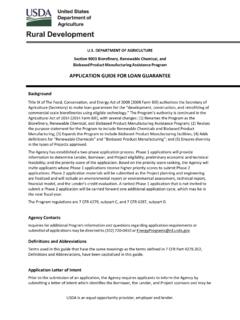
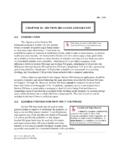
![CHAPTER 14: FUNDING [Official Agency Use Only]](/cache/preview/5/1/5/b/5/3/5/c/thumb-515b535cec62fd2bb25fbb788ef1c7a2.jpg)
